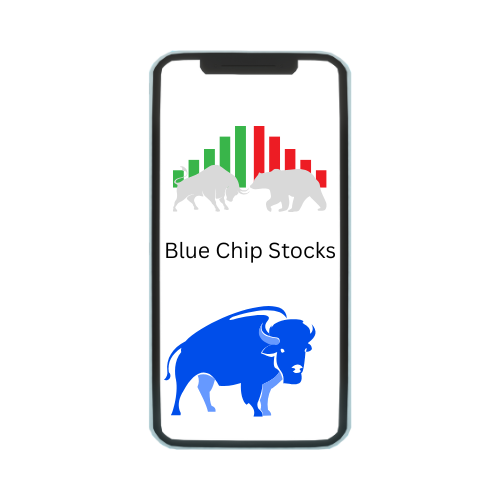What Is The Iron Butterfly Option Strategy?
The Iron Butterfly option strategy, often referred to simply as an “Iron Butterfly,” is a combination of a bear call spread and a bull put spread centered around a single strike price, designed to capitalize on low volatility. This strategy is a limited risk, limited profit trading strategy that benefits from a lack of movement in the price of the underlying asset.
Components of an Iron Butterfly
Call Spread (Bear Call Spread):
- Sell 1 ATM (At-The-Money) Call
- Buy 1 OTM (Out-of-The-Money) Call
Put Spread (Bull Put Spread):
- Sell 1 ATM (At-The-Money) Put
- Buy 1 OTM (Out-of-The-Money) Put
Profit and Loss Potential
- Maximum Profit: The maximum profit occurs if the stock price remains exactly at the strike price of the sold options (ATM) at expiration. This is calculated as the net premium received when entering the trade.
- Maximum Loss: The maximum loss occurs if the stock price moves significantly away from the strike price, either above the higher call strike or below the lower put strike. This is the difference between the strikes of the spreads minus the net premium received.
Breakeven Points
There are two breakeven points for an Iron Butterfly:
- Upper Breakeven = Strike Price of ATM Options + Net Premium Received
- Lower Breakeven = Strike Price of ATM Options – Net Premium Received
How Does The Iron Butterfly Work?
The Iron Butterfly works by taking advantage of the anticipated low volatility in the underlying asset’s price. Here’s a step-by-step explanation of how it functions:
Setting Up the Iron Butterfly
- Sell 1 ATM Call: You sell one call option at the current price of the underlying asset (At-The-Money, ATM). This position generates premium income.
- Buy 1 OTM Call: You buy one call option at a higher strike price (Out-of-The-Money, OTM). This limits your potential loss if the price of the underlying asset increases significantly.
- Sell 1 ATM Put: You sell one put option at the current price of the underlying asset (At-The-Money, ATM). This position also generates premium income.
- Buy 1 OTM Put: You buy one put option at a lower strike price (Out-of-The-Money, OTM). This limits your potential loss if the price of the underlying asset decreases significantly.
Net Premium
When you set up an Iron Butterfly, you receive a net premium (the total premium from selling the call and put options minus the premium paid for buying the call and put options).
Price Movement and Profit/Loss Scenarios
- Underlying Price Stays at ATM Strike Price (Max Profit):
- If the price of the underlying asset remains exactly at the strike price of the sold call and put options (ATM) at expiration, both the sold call and put options expire worthless.
- The bought call and put options also expire worthless.
- You keep the net premium received when setting up the strategy, which is your maximum profit.
- Underlying Price Moves Slightly (Breakeven Points):
- Upper Breakeven Point: This is the ATM strike price plus the net premium received.
- Lower Breakeven Point: This is the ATM strike price minus the net premium received.
- If the underlying price at expiration is at either of these breakeven points, your profit/loss will be zero.
- Underlying Price Moves Significantly (Max Loss):
- If the underlying asset’s price rises above the higher strike price of the bought call, the maximum loss occurs. The loss is limited to the difference between the strike prices of the calls minus the net premium received.
- If the underlying asset’s price falls below the lower strike price of the bought put, the maximum loss occurs. The loss is limited to the difference between the strike prices of the puts minus the net premium received.
Visual Representation
In graphical terms, the Iron Butterfly strategy resembles a tent, with the peak representing maximum profit at the strike price of the sold options (ATM). The sides of the tent slope down to the breakeven points and flatten out, indicating limited loss beyond the breakeven points.
Risk and Reward Summary
- Maximum Profit: Net premium received. Occurs if the underlying price is exactly at the ATM strike price at expiration.
- Maximum Loss: Difference between strike prices of the call/put spreads minus the net premium received. Occurs if the underlying price is beyond the upper or lower breakeven points at expiration.
- Breakeven Points: ATM strike price ± net premium received.
Ideal Conditions
The Iron Butterfly is most effective in low volatility markets where the underlying asset is expected to remain stable, close to the ATM strike price. This strategy is typically used by traders who are confident that the underlying asset will not experience significant price swings until the options expire.
What Are The Key Components Of An Iron Butterfly Trade?
An Iron Butterfly trade, often referred to simply as an “Iron Butterfly” or “Iron Fly,” is an options trading strategy that involves a combination of four options contracts with the same expiration date but three different strike prices. This strategy is designed to capitalize on low volatility and involves limited risk and limited profit potential. Here are the key components of an Iron Butterfly trade:
- Short Call at the Middle Strike Price (ATM Call):
- Sell one call option at the strike price closest to the current market price of the underlying asset (at-the-money).
- Short Put at the Middle Strike Price (ATM Put):
- Sell one put option at the same strike price as the short call (at-the-money).
- Long Call at a Higher Strike Price (OTM Call):
- Buy one call option at a strike price higher than the middle strike price (out-of-the-money).
- Long Put at a Lower Strike Price (OTM Put):
- Buy one put option at a strike price lower than the middle strike price (out-of-the-money).
Structure and Purpose
- Strikes and Expiration: All four options must have the same expiration date.
- Net Credit: The Iron Butterfly is typically established for a net credit. This means you receive a premium when entering the trade because the premiums received from selling the ATM call and put are higher than the premiums paid for the OTM call and put.
- Profit Potential: The maximum profit is achieved if the underlying asset’s price is exactly at the middle strike price at expiration. This is because all options expire worthless, and the trader retains the net credit received when the trade was initiated.
- Risk: The maximum risk is the difference between the middle strike price and the higher or lower strike price, minus the net credit received. This risk occurs if the underlying asset’s price moves significantly away from the middle strike price beyond the range of the higher and lower strike prices.
Key Points
- Breakeven Points: The breakeven points are the middle strike price plus and minus the net credit received.
- Volatility Consideration: The Iron Butterfly is best used when you expect low volatility in the underlying asset, as large price movements will reduce the likelihood of achieving the maximum profit.
- Margin Requirements: Ensure you understand the margin requirements for this strategy, as it involves multiple options contracts.
Advantages Of Iron Butterfly Option
The Iron Butterfly option strategy offers several advantages for traders looking to capitalize on specific market conditions. Here are some of the key benefits:
- Limited Risk:
- The maximum loss is predetermined and limited. It is the difference between the middle strike price and the higher or lower strike price, minus the net credit received. This makes risk management more straightforward.
- Limited Profit:
- While the profit potential is also capped, it is known in advance. The maximum profit occurs if the underlying asset’s price stays exactly at the middle strike price at expiration.
- Net Credit Strategy:
- The Iron Butterfly is established for a net credit, meaning the trader receives money when the trade is initiated. This can be appealing as it provides an immediate potential return.
- Profits from Low Volatility:
- This strategy benefits from low volatility. If the underlying asset’s price remains relatively stable and does not move significantly, the trader can achieve maximum profit.
- Time Decay (Theta):
- As time passes, the extrinsic value of the options decays. Since the Iron Butterfly involves selling two options (ATM call and put), the trader can benefit from time decay, especially if the underlying asset’s price remains near the middle strike price.
- Defined Breakeven Points:
- The breakeven points are clearly defined, which helps traders set more precise exit strategies. The breakeven points are the middle strike price plus and minus the net credit received.
- Flexibility:
- Traders can adjust the strategy based on their market outlook. For instance, if they expect slightly more movement but still within a range, they might widen the strikes of the long call and put options.
- Lower Margin Requirements:
- Compared to some other multi-leg options strategies, the Iron Butterfly may require lower margin because it involves both buying and selling options, thus offsetting some of the risks in the eyes of brokers.
- Combination of Call and Put Strategies:
- The Iron Butterfly combines elements of both call and put options, allowing traders to potentially profit from a neutral market stance without having to choose one over the other.
Example Of Iron Butterfly Option Strategy
The Iron Butterfly options strategy is a limited risk, limited profit options trading strategy that combines four options: one long call, one short call, one long put, and one short put. All options have the same expiration date, and the strike prices of the short options are the same. The long options are equidistant from the short options.
Example Scenario:
- Underlying Asset: Nifty 50 Index (assuming it’s currently trading at 15,800 INR)
- Expiration Date: 30 days from today
Strike Prices and Premiums:
- Buy 1 Out-of-the-Money (OTM) Call (Upper Strike Price):
- Strike Price: 16,200 INR
- Premium: 50 INR
- Sell 1 At-the-Money (ATM) Call (Middle Strike Price):
- Strike Price: 15,800 INR
- Premium: 150 INR
- Sell 1 At-the-Money (ATM) Put (Middle Strike Price):
- Strike Price: 15,800 INR
- Premium: 160 INR
- Buy 1 Out-of-the-Money (OTM) Put (Lower Strike Price):
- Strike Price: 15,400 INR
- Premium: 40 INR
Net Premium Received:
- Total Premium Received = Premium from Short Call + Premium from Short Put = 150 INR + 160 INR = 310 INR
- Total Premium Paid = Premium for Long Call + Premium for Long Put = 50 INR + 40 INR = 90 INR
- Net Premium Received = Total Premium Received – Total Premium Paid = 310 INR – 90 INR = 220 INR
Possible Outcomes at Expiration:
Underlying at 15,800 INR (at the middle strike price):
- Both the short call and short put expire worthless.
- Both the long call and long put expire worthless.
Net Profit = Net Premium Received = 220 INR.
Underlying above 16,200 INR (upper strike price):
- Short call will be exercised, leading to a loss.
- Long call will be exercised, offsetting the short call loss.
- Both the puts expire worthless.
Net Loss = Difference between strikes – Net Premium Received = (16,200 – 15,800) – 220 = 400 – 220 = 180 INR.
Underlying below 15,400 INR (lower strike price):
- Short put will be exercised, leading to a loss.
- Long put will be exercised, offsetting the short put loss.
- Both the calls expire worthless.
- Net Loss = Difference between strikes – Net Premium Received = (15,800 – 15,400) – 220 = 400 – 220 = 180 INR.
Underlying between 15,400 and 15,800 INR:
- The long put will have some intrinsic value, partially offset by the loss on the short put.
- The net loss will decrease as the underlying approaches 15,800 INR.
- Loss Calculation:
- At 15,600 INR:
- Loss on short put = 200 INR (15,800 – 15,600)
- Gain on long put = 200 INR (15,600 – 15,400)
- Net Profit = Net Premium Received – (Loss on short put – Gain on long put)
- Net Profit = 220 INR – (200 – 200) = 220 INR
- At 15,600 INR:
Thus
- Maximum Profit: Net Premium Received = 220 INR.
- Maximum Loss: Difference between strikes – Net Premium Received = 400 INR – 220 INR = 180 INR.
- Breakeven Points:
- Lower Breakeven = Lower Strike Price + Net Premium Received = 15,400 INR + 220 INR = 15,620 INR.
- Upper Breakeven = Upper Strike Price – Net Premium Received = 16,200 INR – 220 INR = 15,980 INR.
This example demonstrates how the Iron Butterfly strategy can be used to potentially profit from low volatility in the underlying asset while limiting both the potential loss and gain.
What Are The Risks Associated With An Iron Butterfly Strategy?
The Iron Butterfly strategy, while being a limited risk and limited reward strategy, still involves several risks that traders should be aware of:
- Limited Profit Potential:
- The maximum profit is capped at the net premium received when the strategy is established. This means even if the underlying asset’s price stays exactly at the strike price of the short options, the profit is limited.
- Limited, but Significant Loss:
- While losses are limited, they can still be substantial. The maximum loss occurs if the underlying asset’s price moves significantly away from the middle strike price. The loss is the difference between the strikes of the long and short options minus the net premium received.
- Market Direction Risk:
- The strategy benefits from low volatility and a stable underlying asset price. If the market becomes highly volatile and the asset’s price moves significantly, the strategy can incur losses.
- Assignment Risk:
- Since the Iron Butterfly involves selling options, there’s a risk of early assignment, particularly for American-style options which can be exercised at any time before expiration. This can lead to unexpected positions and potential losses.
- Time Decay:
- While the strategy benefits from time decay, if the underlying asset’s price does not stay within a narrow range, the potential profit from time decay may not be realized fully.
- Execution Risk:
- The Iron Butterfly involves multiple legs (four different options), which can complicate execution. If the orders are not executed simultaneously, the trader may be exposed to unintended market risk.
- Liquidity Risk:
- The options involved might not be liquid, leading to wider bid-ask spreads. This can increase the cost of entering and exiting the strategy, potentially reducing the net profit.
- Commission and Fees:
- Since the strategy involves multiple options, commissions and fees can be higher, eating into potential profits.
- Margin Requirements:
- Maintaining an Iron Butterfly may require a significant margin, which can tie up capital that could be used elsewhere.
- Breakeven Points:
- The breakeven points are relatively close to the middle strike price. If the underlying asset’s price moves beyond these points, the strategy will result in a loss.
Conclusion
The Iron Butterfly is particularly useful in markets where the underlying asset is expected to experience low volatility. Its advantages of limited risk, defined profit and breakeven points, potential benefits from time decay, and lower margin requirements make it an attractive strategy for traders who have a neutral outlook on the underlying asset. However, traders must be comfortable with the fact that both the profit and risk are capped, and the strategy works best in a low-volatility environment.
Frequently Asked Questions(FAQs)
Catastrophe Bonds are typically invested in by institutional investors such as pension funds, hedge funds, and other asset managers seeking diversification and high yield.
Unlike traditional insurance products, Catastrophe Bonds transfer risk directly to capital markets investors, reducing the reliance on traditional reinsurance.
Catastrophe Bonds typically cover natural disasters such as hurricanes, earthquakes, floods, and sometimes pandemics.





